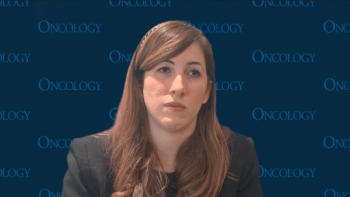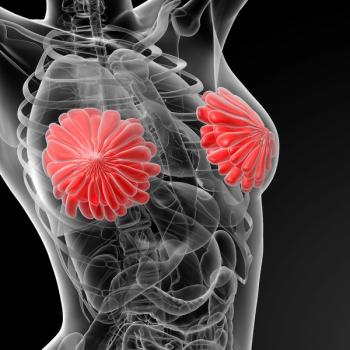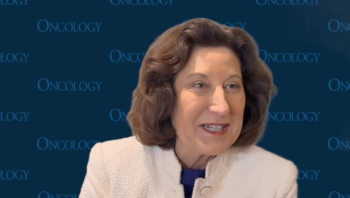
Oncology NEWS International
- Oncology NEWS International Vol 23 No 5
- Volume 23
- Issue 5
Angiogenesis Precedes Breast Cancer Development, Van Nuys Study Shows
SAN ANTONIO--Mammographic signs of angiogenesis and neovascularity may identify a developing breast cancer years before the lesion becomes visible, Parvis Gamagami, MD, said at the San Antonio Breast Cancer symposium.
SAN ANTONIO--Mammographic signs of angiogenesis and neovascularitymay identify a developing breast cancer years before the lesionbecomes visible, Parvis Gamagami, MD, said at the San AntonioBreast Cancer symposium.
At The Breast Center, Van Nuys, Calif, a review of xeromammogramsof 204 breast cancer patients, made up to 13 years before cancerdetection, showed that vascular evidence of tumor developmentpreceded the mammographic appearance of 91% of nonpalpable lesionsand 100% of advanced palpable lesions.
Signs of tumor-related angiogenesis include hypervascularity,vessel dilation or engorgement, focally convergent vessels, andespecially calcification of the nutrient artery of the carcinoma(for unknown reason). "If a single calcified vessel appearsin only one breast without evidence of malignancy, that is a strongindication of high risk," said Dr. Gamagami, a radiologistat the Van Nuys Breast Center.
He believe that mammographic evidence of angiogenesis can be usedto identify very small, early-stage lesions that otherwise couldbe missed. In their study, they identified vessel convergencein malignancies as small as 5 mm.
Evidence of tumor angiogenesis is often dismissed as benign vascularityor nonpathologic asymmetry, Dr. Gama-gami said. In some instances,the signs are simply overlooked.
Patients with evidence of breast cancer angiogenesis should befollowed closely, probably with annual mammograms, at least inthe affected breast, Dr. Gamagami advised. "We know thata preneoplastic condition exists years before malignant transformationoccurs," he said. "We don't have any criteria to helpus decide which breast or breasts will develop cancer. Angiogenesismay be helpful in that respect, so when we see a single calcifiedartery, we have to follow its itinerary to see where it ends."
Investigators at Van Nuys have begun evaluating the use of corebiopsy in women who have suspicious vessels that end in areasof parenchymal hyperdensity, one characteristic of malignancy.
Articles in this issue
almost 30 years ago
Earlier Unrelated BMT Is Effective in CML Subgroupalmost 30 years ago
Taxol/Cisplatin Extends Survival in Advanced Ovarian Caalmost 30 years ago
Prostate Cancer Patients Face a Host of Psychosocial Issuesalmost 30 years ago
NSABP to Study Docetaxel in Operable Breast Canceralmost 30 years ago
Panel Recommends Approval of Talc for Malignant Pleural Effusionsalmost 30 years ago
ODAC Recommends Approval of Verluma for Staging of SCLCalmost 30 years ago
Minorities Lack Internet Access to Cancer Research Dataalmost 30 years ago
Fludarabine Produces CRs as First-Line CLL Therapyalmost 30 years ago
M.D. Anderson's C. Stratton Hill Receives Award From American Cancer Societyalmost 30 years ago
Managed Care: The View From Salick Managed CareNewsletter
Stay up to date on recent advances in the multidisciplinary approach to cancer.















































































